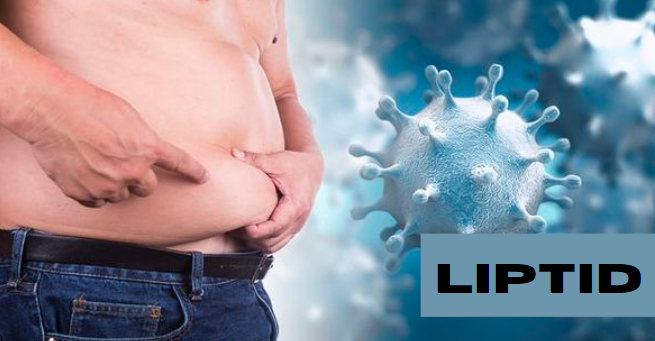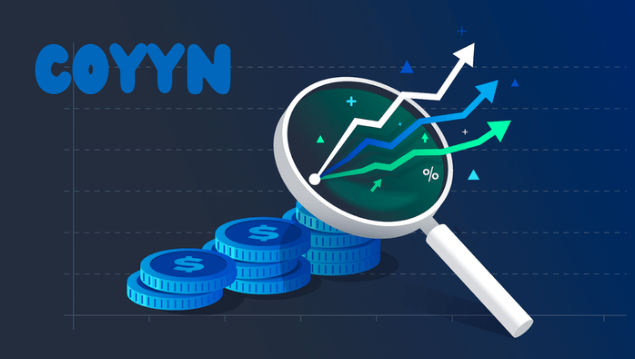Liptid: A Comprehensive Exploration of the Essential Fatty Compound
Introduction to Liptid
When we talk about “liptid,” we are referring to lipids—fatty compounds that are critical to the functioning of the human body. However, the term “liptid” is often mistakenly used or misunderstood. Lipids, sometimes referred to colloquially as “liptid,” are molecules that include fats, waxes, sterols, and fat-soluble vitamins (A, D, E, and K).
They serve a variety of functions, from energy storage to forming the building blocks of cell membranes. In this article, we’ll dive deep into the world of lipids (or “liptid”), exploring their roles, types, health benefits, and the ways they impact your overall well-being.
What Are Lipids (Liptid)?
Lipids, often mistakenly called “liptid,” are organic molecules composed of carbon, hydrogen, and oxygen atoms. They are insoluble in water but soluble in organic solvents such as alcohol and ether. Lipids play an essential role in the body, from providing energy to supporting cell structure and function.
The Chemistry of Lipids
The core chemical structure of lipids consists of a long hydrocarbon chain. This hydrophobic tail repels water, while some lipids also have hydrophilic heads, which attract water. This dual nature allows lipids to form membranes and barriers within the body. Lipids’ unique structure enables them to perform a variety of essential biological functions that no other macronutrient can replicate.
Types of Lipids
There are several types of lipids that differ in structure and function:
- Triglycerides: These are the most common form of lipids, often stored in fat cells. They consist of three fatty acid chains attached to a glycerol molecule. Triglycerides are an essential energy source for the body.
- Phospholipids: These lipids are vital for forming cell membranes. Their structure, which includes both hydrophilic and hydrophobic ends, helps create the lipid bilayer that forms the foundation of cell walls.
- Steroids: Steroids are a special class of lipids that include cholesterol and hormones such as testosterone and estrogen.
- Waxes: Waxes are simple lipids that provide protection for plants and animals by forming a protective, water-repellent layer.
Functions of Lipids (Liptid)
Lipids play a multitude of roles within the human body, and without them, life as we know it would cease to function properly. Here are the core functions:
- Energy Storage: Lipids are an efficient way for the body to store energy. One gram of fat provides about 9 calories of energy, more than twice the energy provided by proteins or carbohydrates.
- Cell Membrane Formation: Lipids form the structural components of cell membranes. Phospholipids, in particular, create a semi-permeable membrane that regulates what enters and exits the cell.
- Insulation and Protection: Fat acts as a cushion for vital organs and serves as insulation, helping to regulate body temperature.
- Hormone Production: Steroid hormones, such as estrogen and testosterone, are synthesized from cholesterol, a lipid.
- Absorption of Fat-Soluble Vitamins: Lipids assist in the absorption of vitamins A, D, E, and K, which are crucial for various body functions such as immune response, bone health, and antioxidant activity.
Lipids vs. Fats: Clarifying the Misconception
People often use the terms “lipid” and “fat” interchangeably, but this is not entirely accurate. Fats are a subgroup of lipids, specifically triglycerides. While all fats are lipids, not all lipids are fats. For example, cholesterol is a lipid, but it is not classified as a fat. The distinction between fats and other lipids is important because different types of lipids serve different functions within the body.
Lipid Digestion and Metabolism
The digestion of lipids begins in the stomach, but most of the action happens in the small intestine, where bile emulsifies fats, breaking them down into smaller droplets. Enzymes called lipases further degrade these droplets into fatty acids and glycerol, which are then absorbed by the intestines.
Once absorbed, fatty acids are transported through the lymphatic system to the bloodstream. The body then either uses these lipids for energy or stores them for later use. This process is tightly regulated by various hormones, including insulin, which influences fat storage, and glucagon, which triggers fat breakdown during fasting.
The Role of Lipids (Liptid) in Health
Lipids are not just energy stores or structural components of cells. They play dynamic roles in regulating body processes, influencing health, and even affecting disease risk. The type of lipids you consume can either support or harm your health.
Beneficial Lipids
- Monounsaturated and Polyunsaturated Fats: Found in plant oils, nuts, seeds, and fish, these fats are considered “good” fats. They help reduce bad cholesterol levels and lower the risk of heart disease and stroke.
- Omega-3 and Omega-6 Fatty Acids: These polyunsaturated fats are essential for brain function, cardiovascular health, and reducing inflammation.
- Phospholipids: As the building blocks of cell membranes, phospholipids play a critical role in maintaining the integrity and functionality of cells. They also participate in signal transduction, a process essential for communication between cells.
Harmful Lipids
- Saturated Fats: While these fats are necessary in small amounts, consuming too many can raise LDL (bad) cholesterol levels, increasing the risk of heart disease.
- Trans Fats: Industrial trans fats, found in processed and fried foods, are harmful to heart health and should be avoided as much as possible. They not only raise LDL cholesterol but also lower HDL (good) cholesterol.
Lipids and Chronic Diseases
- Cardiovascular Disease: An imbalance of lipids, particularly high levels of LDL cholesterol and triglycerides, can lead to the development of atherosclerosis. This condition involves the buildup of fatty deposits in the arteries, increasing the risk of heart attacks and strokes.
- Diabetes: Poor lipid metabolism can contribute to insulin resistance, a precursor to type 2 diabetes. A diet high in unhealthy fats, such as trans fats, can exacerbate this condition.
- Obesity: Lipids are a dense source of calories, and excessive intake can lead to weight gain and obesity. Obesity is linked to a variety of health issues, including heart disease, diabetes, and joint problems.
Lipids in the Diet: What to Eat and What to Avoid
Knowing which lipids to include in your diet can greatly influence your overall health. The key is balancing healthy fats with limiting harmful ones.
Healthy Lipid Sources
- Avocados: Packed with monounsaturated fats, avocados are heart-healthy and can help reduce bad cholesterol.
- Fatty Fish: Salmon, mackerel, and sardines are rich in omega-3 fatty acids, which reduce inflammation and support brain health.
- Nuts and Seeds: Almonds, walnuts, and flaxseeds provide a mix of healthy fats and fiber, supporting heart health and digestion.
- Olive Oil: A staple of the Mediterranean diet, olive oil is high in monounsaturated fats that can lower the risk of heart disease.
Lipids to Limit or Avoid
- Processed Foods: Many processed foods contain trans fats, which are harmful to heart health. Check food labels and avoid items with “partially hydrogenated oils.”
- Red Meat: While red meat can be a good source of protein and iron, it also contains saturated fats, which should be consumed in moderation.
- Butter and Lard: High in saturated fats, butter and lard should be limited, especially if you are at risk for heart disease.
The Future of Lipid Research: What’s on the Horizon?
As science progresses, the understanding of lipids (liptid) continues to evolve. Research is delving deeper into how specific types of lipids affect health and disease, leading to potential advancements in nutritional guidelines, pharmaceuticals, and even personalized medicine.
Lipids and the Brain
Recent studies have highlighted the critical role that lipids play in brain health, particularly in neurodegenerative diseases like Alzheimer’s and Parkinson’s. Researchers are exploring how lipid imbalances in the brain may contribute to the progression of these diseases and how dietary interventions could mitigate the risk.
Lipid-Based Drug Delivery Systems
Lipids are increasingly being used in the development of drug delivery systems, particularly for cancer treatments. Lipid nanoparticles can encapsulate drugs, allowing for more targeted and effective treatment options.
FAQs About Liptid
1. What is the difference between lipids and liptid?
“Liptid” is a common misspelling or mispronunciation of the term “lipid,” which refers to a group of fatty molecules essential for energy storage and cell function.
2. Are all fats considered lipids?
Yes, all fats are lipids, but not all lipids are fats. Fats are a type of lipid known as triglycerides, which are primarily used for energy storage.
3. Can lipids be harmful to health?
Certain lipids, such as trans fats and excessive saturated fats, can be harmful to health by increasing the risk of cardiovascular diseases. However, many lipids, like omega-3 fatty acids, are beneficial.
4. How much fat should I consume daily?
The American Heart Association recommends that fats make up 20-35% of your total daily calorie intake, with a focus on healthy fats like monounsaturated and polyunsaturated fats.
5. What foods are high in healthy lipids?
Foods high in healthy lipids include avocados, fatty fish, nuts, seeds, and olive oil. These foods provide essential fatty acids and support overall health.
Conclusion
The world of lipids (or liptid, as some may call it) is complex, yet vital to our health and well-being. Understanding the different types of lipids and their functions can help you make informed dietary choices that promote health and prevent disease.
From the role of lipids in cell structure and energy storage to their impact on heart health and chronic diseases, these fatty compounds are more than just a source of calories—they are essential to life itself. By focusing on healthy fats and minimizing harmful ones, you can harness the power of lipids to improve your quality of life.






